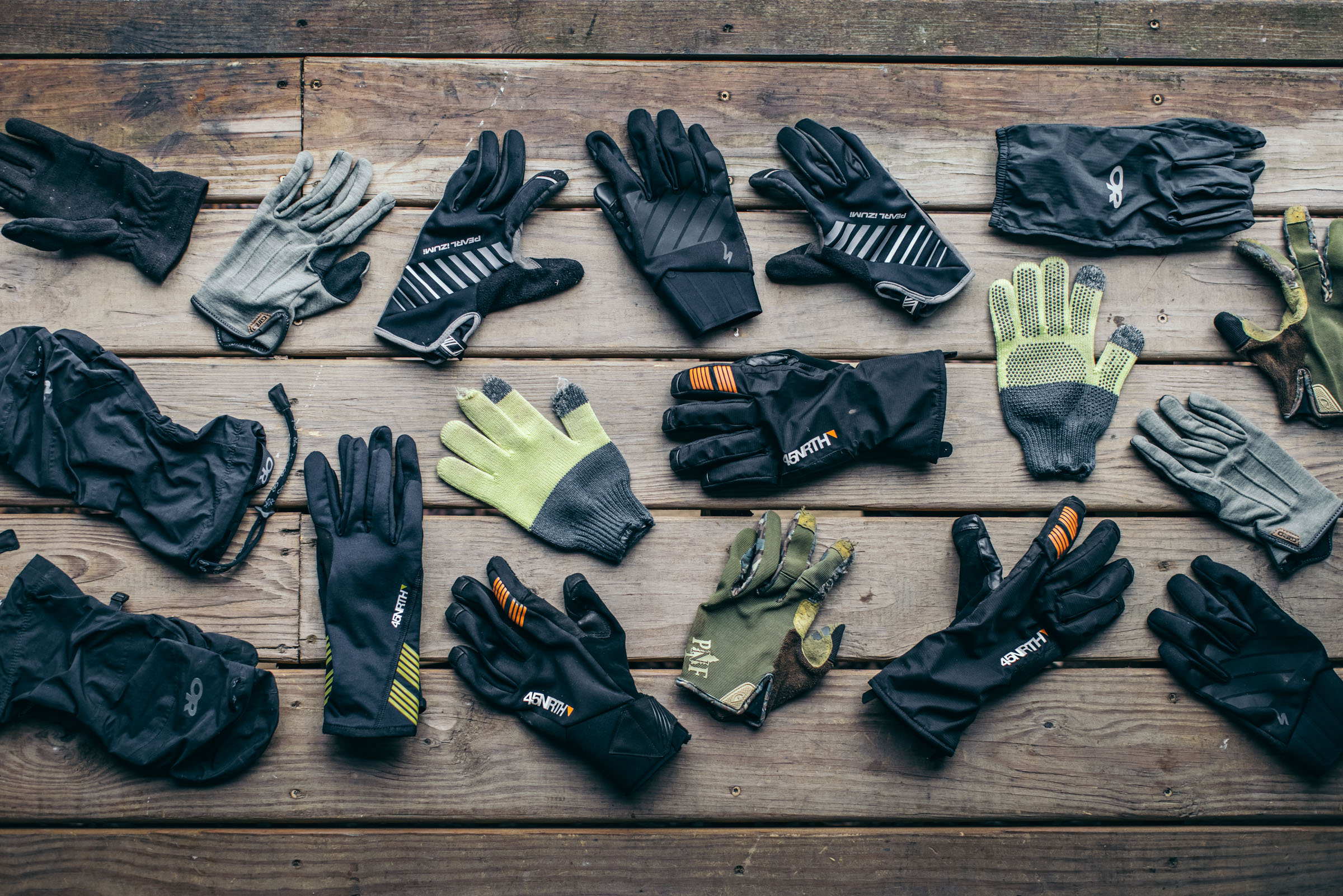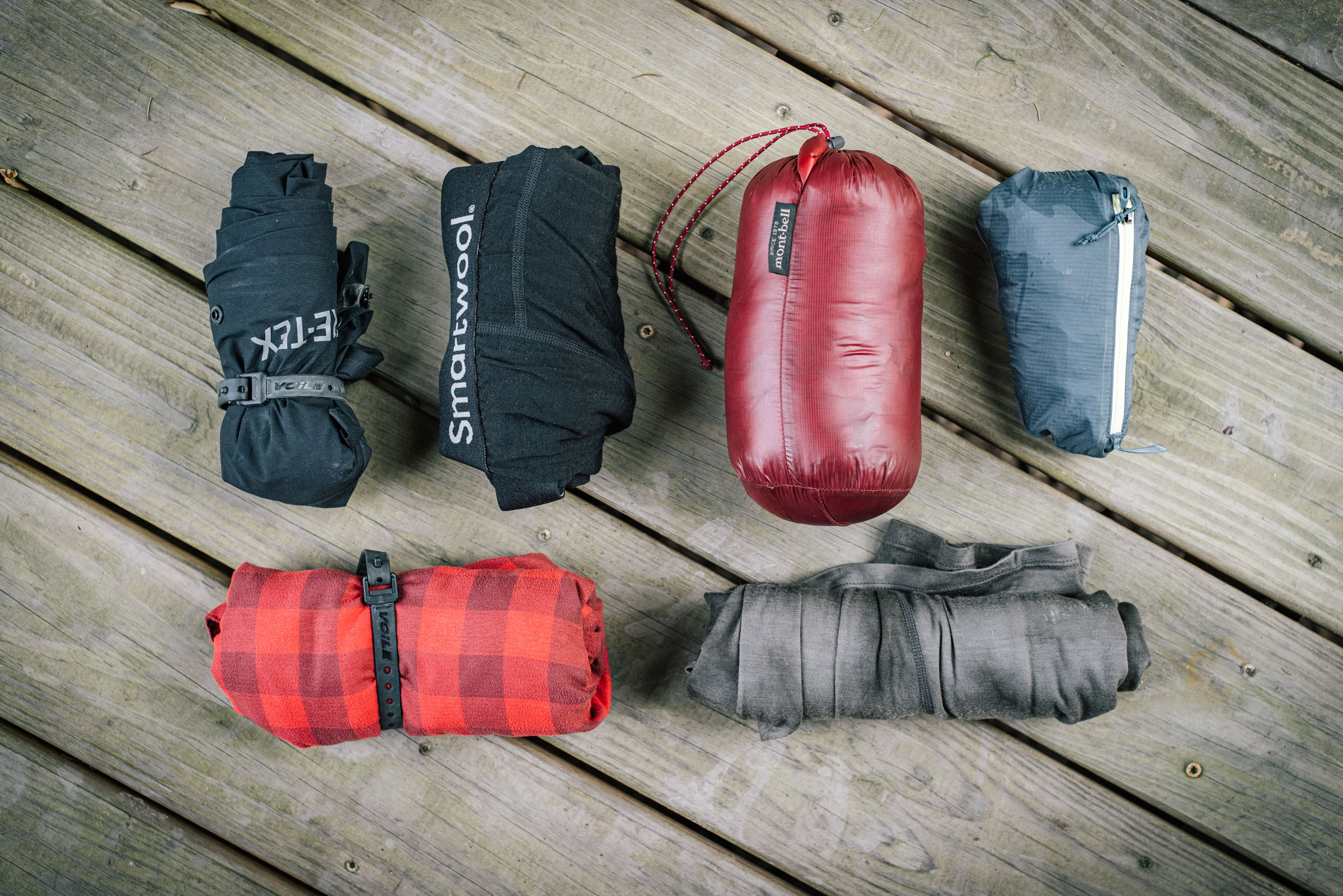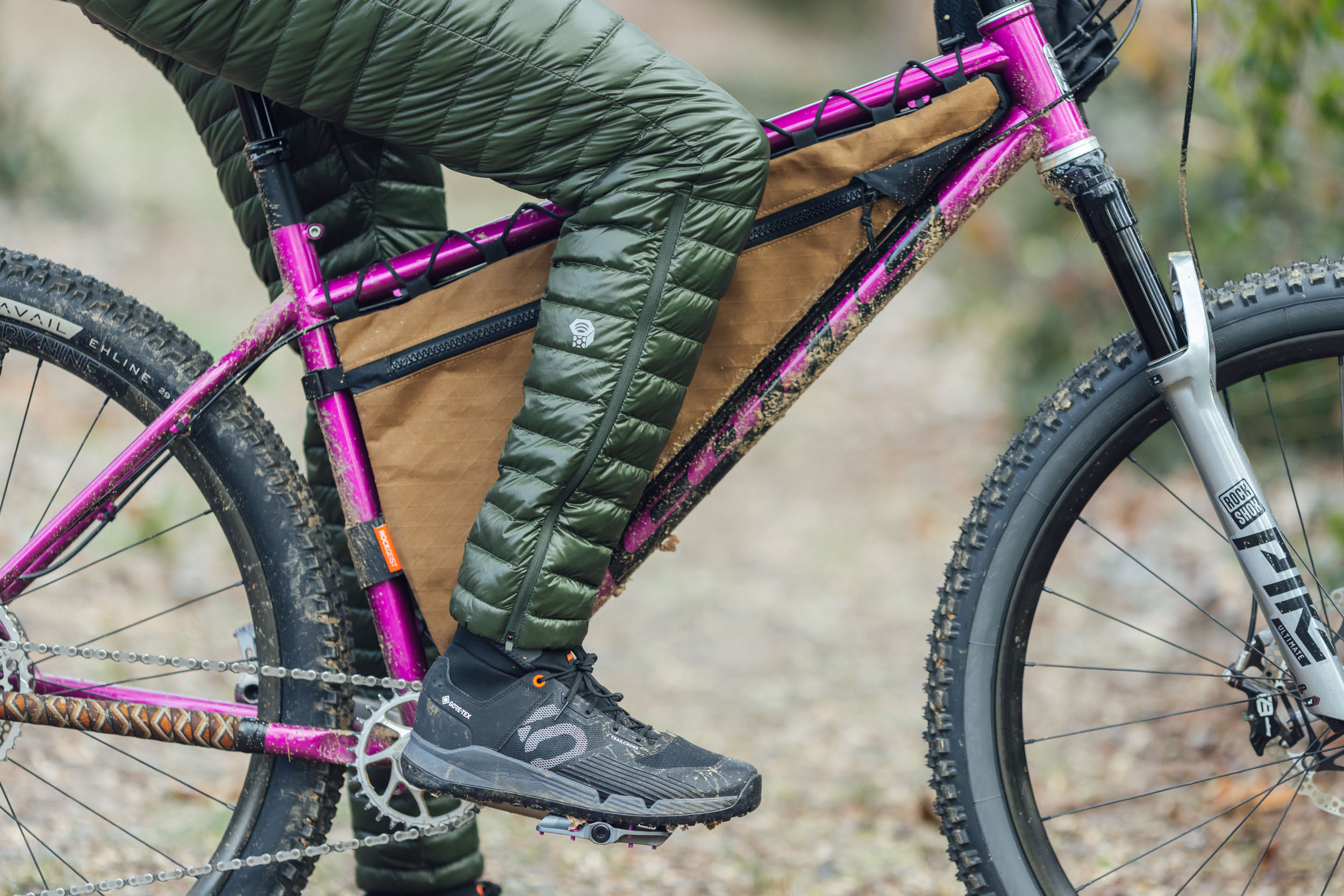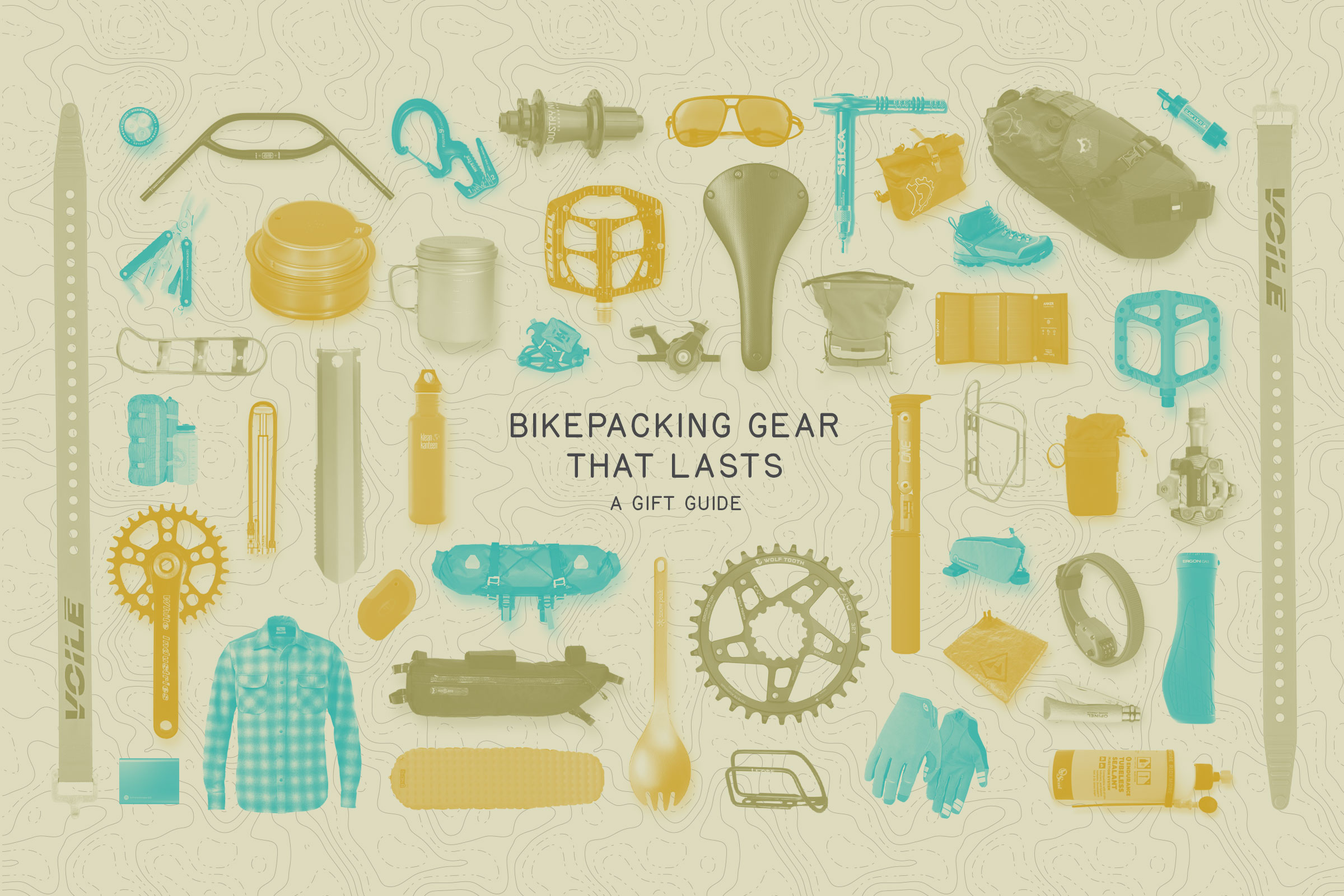Share This
0
Thanks in advance for spreading the word!
In this guide and gear roundup, we compiled a list of our favorite cycling gloves and organized them based on temperature range and use. Find a list of the best cycling gloves here, plus our thoughts on glove layering for outings and bikepacking expeditions in changing weather…
 compose Team Work
time Mar 2, 2023
comment 82
compose Team Work
time Mar 2, 2023
comment 82
When it comes to gloves, there are countless choices on the market, from extra padded to ultra-minimal, and from shoulder season gloves to winter-rated pogies and lobster gloves. Even so, sometimes it feels like a shot in the dark trying to find the best cycling gloves that will work in fluctuating temperatures on a bigger ride and hold up to the rigors of bikepacking. We’ve been fortunate to try quite a few different options over the years, and we’ve each developed a few favorites that have become regulars in our kits. So, for this gear roundup, we thought we’d gather our thoughts and organize our picks into a temperature-specific guide to help take the guesswork out of keeping your fingers warm and your hands protected.
Below you will find four different temperature ranges, each containing three of our top cycling gloves with thoughts on how to keep your hands comfortable in those conditions. Farther down the page, find a few thoughts on waterproof gloves, pogies, and an important topic for bikepackers: layering for changing weather conditions. Note that where necessary, we included a few options we’ve heard good things about but haven’t yet had the opportunity to test out.
Spring/Summer Cycling Gloves
60°+ (15°C)
Although finding appropriate gloves for spring and summer bikepacking is less complicated than for colder conditions, warmer temperatures pose challenges of their own. Finding a glove that’s durable yet still breathable and comfortable is key. In addition, finding the right palm composition and padding that works for you is essential for long rides. Features like touch screen compatibility and grip should also be considered. Here are three of our favorites:

PDW 1817 Gloves
Logan: Paying homage to German inventor Karl von Drais’s 1817 invention the “swiftwalker,” credited by some as the first bicycle, the PDW 1817 gloves feature soft, durable leather palms and a breathable cotton crochet back. They’re plenty grippy once they break in, even when used with fabric bar wrap. And the open-air weave keeps your hands cool when it’s hot outside. I used them quite a bit when the weather was still warm, and they even made an appearance in the Burial Beer Co. collab photos. The 1817s are offered in four sizes with a black or white color scheme.
50 grams / Made in TBD / $30 at Performance
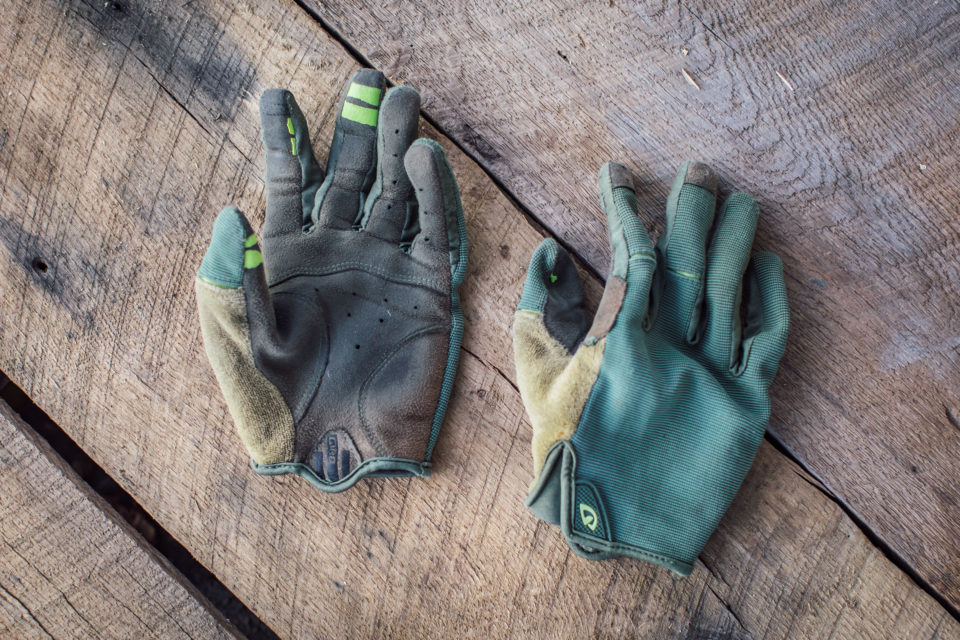
Giro DND and D’Wool Gloves
Logan: Unless it’s really hot, I usually ride with full-finger gloves. I prefer gloves without gel or padding; in my opinion, this allows the ideal grip and comfort with my favorite grips (Ergon GA3s). The Giro DND and D’Wool have been my two go-tos for years. They both have a three-panel, Axsuede microfiber palm that holds an extremely good grip, and the fit is excellent. The D’Wool has a merino upper, which I prefer for its odor resistance and comfort, but the DND is cheaper and has proven to be a little more durable.
56/53g (DND/D’Wool) / $25/35 Men’s DND W’s DND D’Wool

Handup Most Days Gloves
Neil: When I look for a glove, I’m looking for something simple. No velcro, no padding, no extra bells and whistles. Just an easy full-finger glove to slip on and off, a thin fabric that gives me a better feel for the bar, and perhaps some rubber on the palm and fingertip for grip. That’s why I continue to purchase Handup Gloves. They check all of my needs and come in a variety of rad colorways. They also have a custom program, which is something I can appreciate, as I know it’s not an easy task.
$29 at Handup
Shoulder Season Cycling Gloves
45-60°F (7-15°C)
Spring and fall shoulder seasons or mountain weather can get a bit more challenging. We’ve all been on long cold rides, and we’re all familiar with frigid hands and how that can zap your energy. Layering may play a part in how we prepare for temperatures that fluctuate in this range—which we’ll get to later—but here are a few of our favorites for trail riding and layering.
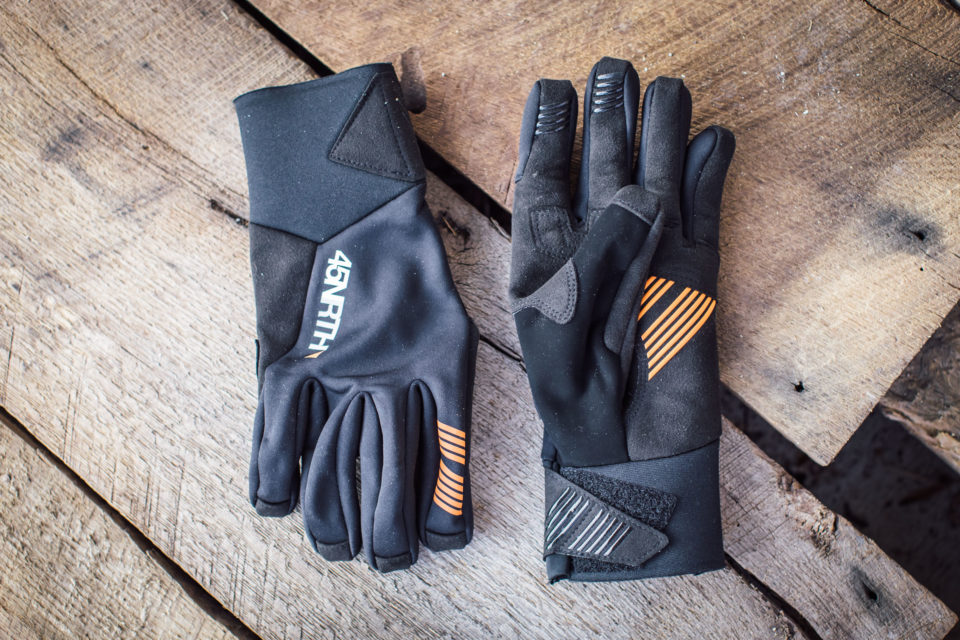
45NRTH Nokken
Logan: The “transition season” Nøkken glove is made for temps from 25°F (-3°C) to 45°F (7°C). However, I’ve found them more appropriate from temps between 40 and 55. And for that, they’re excellent. The Nokken has a comfortable fit, a grippy synthetic suede palm, and an odor-resistant merino wool inner lining. The long adjustable neoprene cuffs are also quite nice, although they can get a little warm in more mild temps. Since these “new” photos, this pair has seen three seasons of use and although they’ve lost most of the rubber texture, they’re still going strong, odor-free, and are one of my main gloves for trail riding and gravel.
114g (L) / $70 at Jenson

DeFeet DuraGlove (Wool)
Joe: Defeet Duragloves go with me on every trip. They’re warm but breathable, have a great close fit, and provide solid contact with the bars no matter what grip or bar tape I’m using. I’ll wear them down to about the high 30s F/ (3°C) and they’re temperature regulating enough to keep on well past 60°F/15°C. They’re the core of my hand dressing system: In freezing rain, I might put some nitrile gloves on under them, and on expedition, they are the liners for Gortex mitts. I wear them inside the poggies in winter. The blend of nylon and 40% merino wool keeps the Duraglove name honest, as they’ve shrugged off everything I’ve thrown at them.
71g (L) / $30 at Worldwide
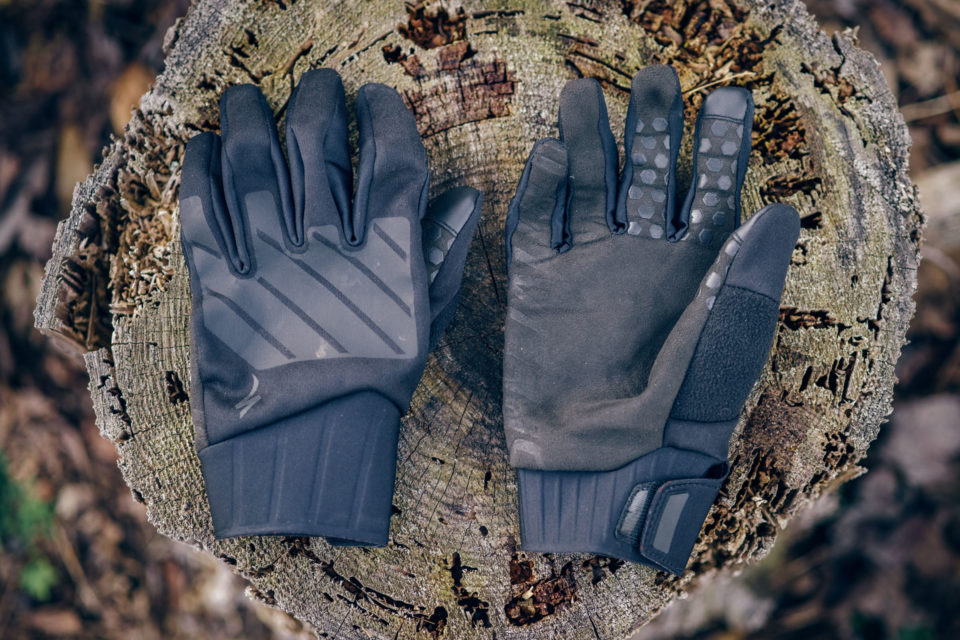
Specialized Trail-Series Thermal Gloves
Logan: I recently picked up a pair of Specialized’s new Trail-Series Thermal Gloves and have been quite impressed. The gloves feature a windproof soft-shell upper and an Axsuede microfiber palm. They’re quite simple and svelte, which I really like for trail riding. They’re also very light and surprisingly warm. I’ve also noticed that they do well in a range of temperatures, which is nice when sweaty climbs are followed by chilly descents.
72g (L) / $40 at Jenson
Cold Weather Cycling Gloves
30-45°F (-1-7°C)
Proper gloves are essential for temperatures that hover around freezing, especially on warm winter days that cool off quickly when the sun disappears. More than just being uncomfortable, having inadequate gloves while riding in temps that fluctuate down to freezing can be downright dangerous. The following three gloves have served us well.
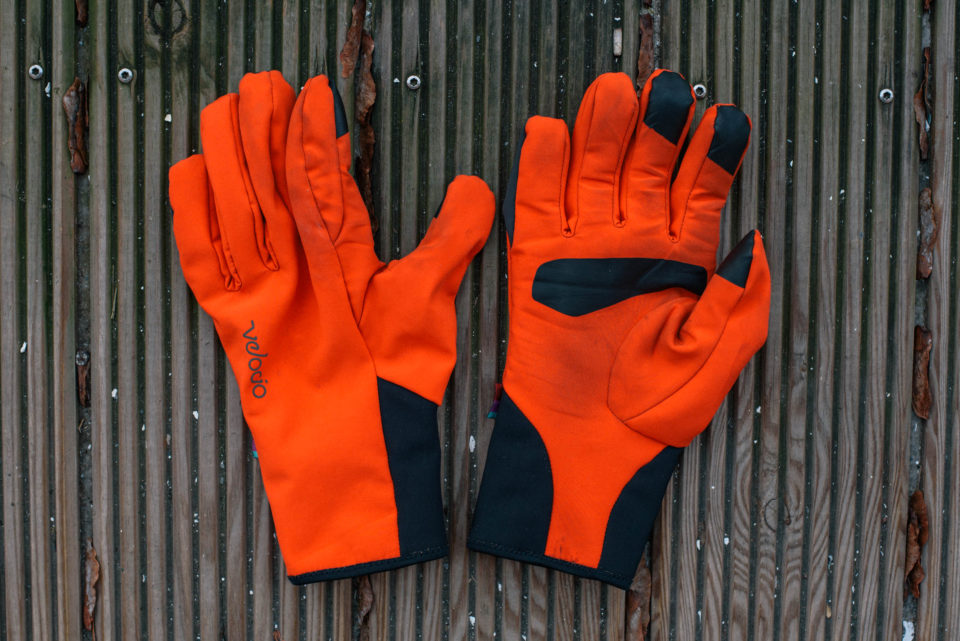
Velocio Alpha
Lucas: I’ve been impressed by Velocio’s Alpha gloves since the first time I pulled them on, and they’ve earned their place as my default glove for milder temps down to around freezing. The Alphas are wind and water-resistant, super soft, offer a little stretch where it counts, don’t have any annoying velcro, and the insulated Polartec liner lends a delightful tactile feel. Some of the grippy bits are beginning to peel after a few months of daily use, but they’ve held up well overall.
80 g (XL) / $119 at Velocio.com
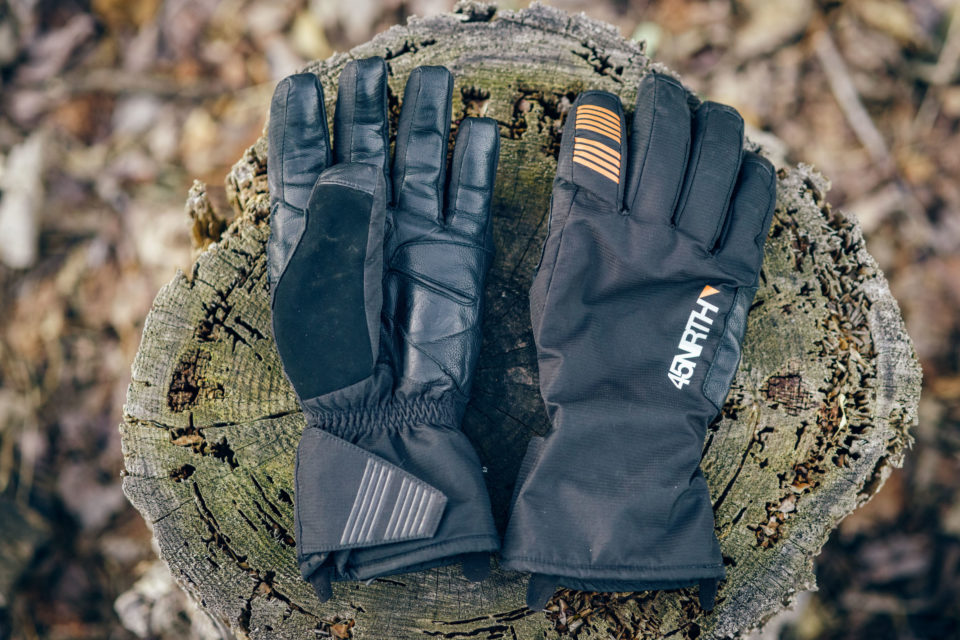
45NRTH Sturmfist 5
Miles: The Sturmfist 5 gloves are a five-finger, wind and water resistant glove with an extra long cuff to tuck under your favorite jacket. They feature synthetic Polartec Alpha insulation, a durable leather palm, and come in six different sizes. Although 45NRTH rates Sturmfist 5 for 15°F to 35°F (-9°C to 2°C), we found them better suited for fall, early spring, or mild winter days. Additionally, they’re not overly bulky, so it’s not out of the question to pack them as an option for when temps drop.
166g (XL) / $85-115 at REI
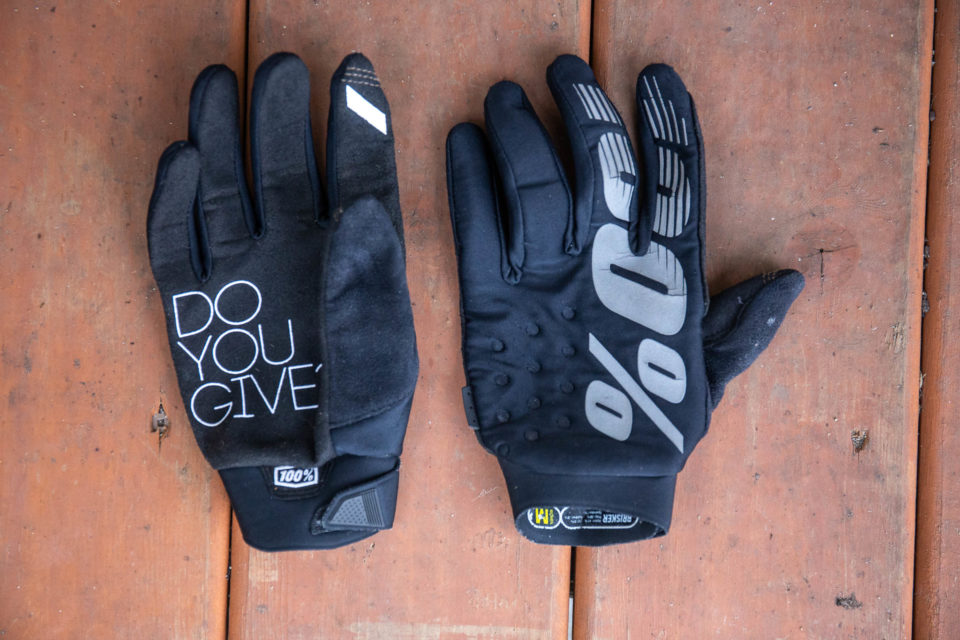
100% Brisker Gloves
Emily: Although I wouldn’t push the Brisker gloves down below freezing, they’ve become my top pick for anything above arounndn 40°F (3°C). They are comfortable, very flexible, just lightly insulated so they have no impact on dexterity while riding. It’s nice to see a womens-specific version as well, which I’ve found to fit quite well.
57g (M) / $35 Men’s W’s
Winter & Extreme Weather Gloves
Below 30°F (-1°C)
When the mercury drops below freezing, most winter cyclists reach for pogies, which we’ll cover below. However, pogies aren’t ideal for everyone. While we don’t have much experience with this category, we’ve heard pretty good things about these three options. We’ll be sure to update this down the road with some real world experience.
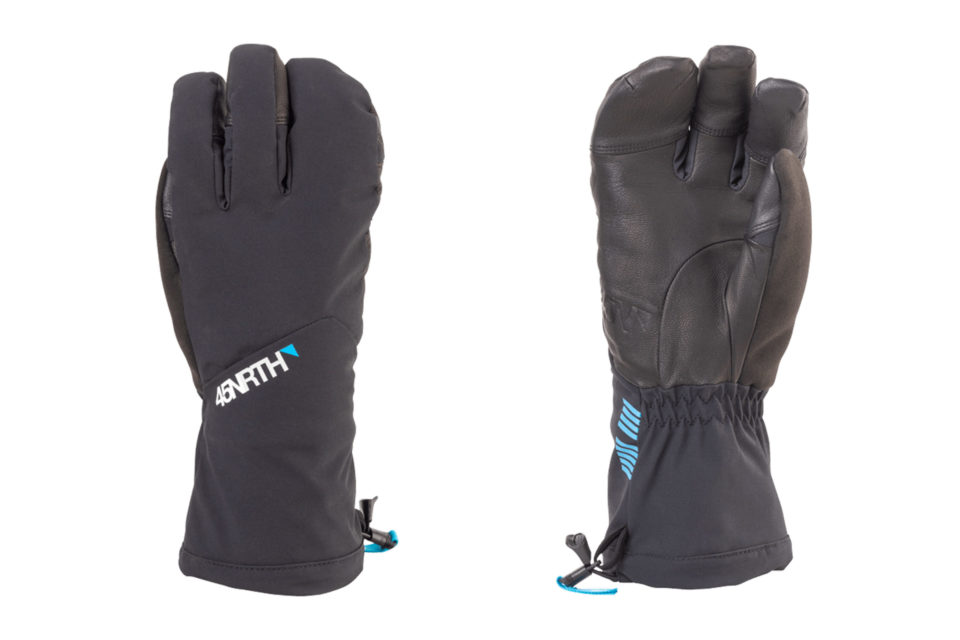
45Nrth Sturmfirst 4
Having had mostly positive experiences with 45NRTH’s other gear, the Sturmfist 4 gloves would be at the top of our list for gloves to try out next winter. They are designed for 0°F to 15°F (-18°C to -9°C), use synthetic Polartec Alpha and Aerogel insulation, a split-finger design, and are wind and water resistant. The long cuff and merino wool liner look promising, and they come in six different sizes from X-Small to XX-Large, which is great to see.
$90 at REI Backcountry

SealSkinz Extreme Cold Weather Split Finger
The SealSkinz Waterproof Extreme Cold Weather Split Finger Glove is a promising option that we’d like to test out for ourselves soon. They are designed to be 100% waterproof, rugged, and are labeled with their warmest temperature rating. They are made from a blend of polyester and nylon and use a synthetic Climashield insulation.
$105 at REI

Pearl Izumi AmFIB Lobster Gel Glove
The AmFIB Lobster Gel Glove from Pearl Izumi uses a split-finger or lobster glove design, which groups your fingers together for more warmth without sacrificing control of levers and shifters. The glove is insulated with Primaloft Gold, which is an exceptional synthetic insulation, and the entire glove is wind and water resistant. There is no temperature range provided, but other users report comfort to 10°F and colder.
$75 at REI
Pogies
For riders who live in the far north or just refuse to stop riding in the winter, pogies are the warmest and most reliable option when it comes to cold weather cycling. We’ve tried many options in our Pogies guide, but here are three of our favorites.
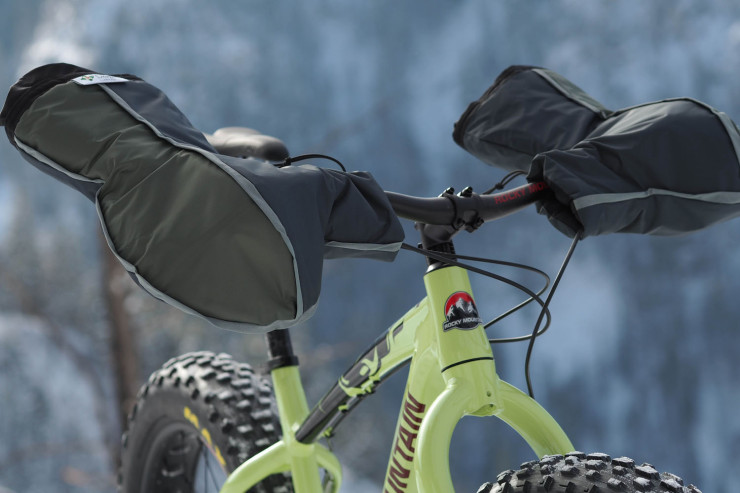
Dogwood Designs Original Bike Poagie
The original Bike Poagie, at first glance, may look like it’s missing some features that others offer – no extra storage areas, dedicated vents, or bar-end locks, and a slightly saggy stance without having your hands on the bars. However, their design takes on a less-is-more attitude, and they are made to order with different insulation weights, colours, and trim options to create a truly customized option.
370g (Original) / $110-170 / Learn more
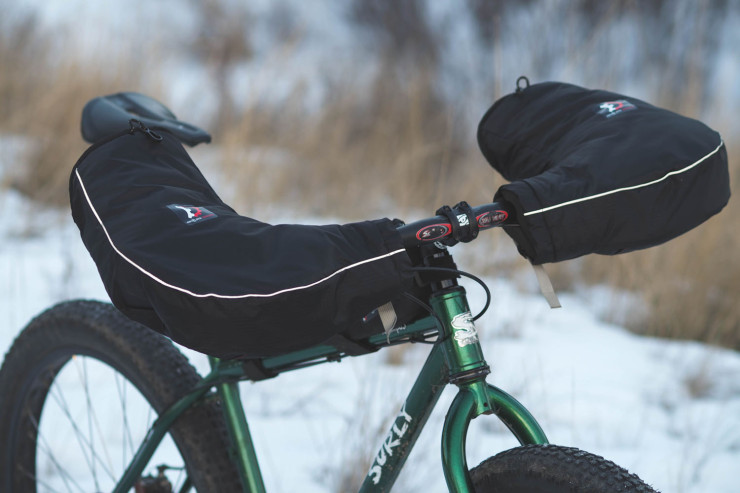
Revelate Williwaw Pogies
Formerly known as the Expedition Pogies (pictured above), the Williwaw Pogies from Revelate Designs are designed with expedition-style bikepacking in mind and make a great option for anyone riding in true winter conditions. They are rated for temperatures ranging from 0°F to 25°F (-17°C to -4°C), have a zippered front vent, tool-free bar end plug attachment, and are made in the USA.
482g (One Size) / $120 at Revelate
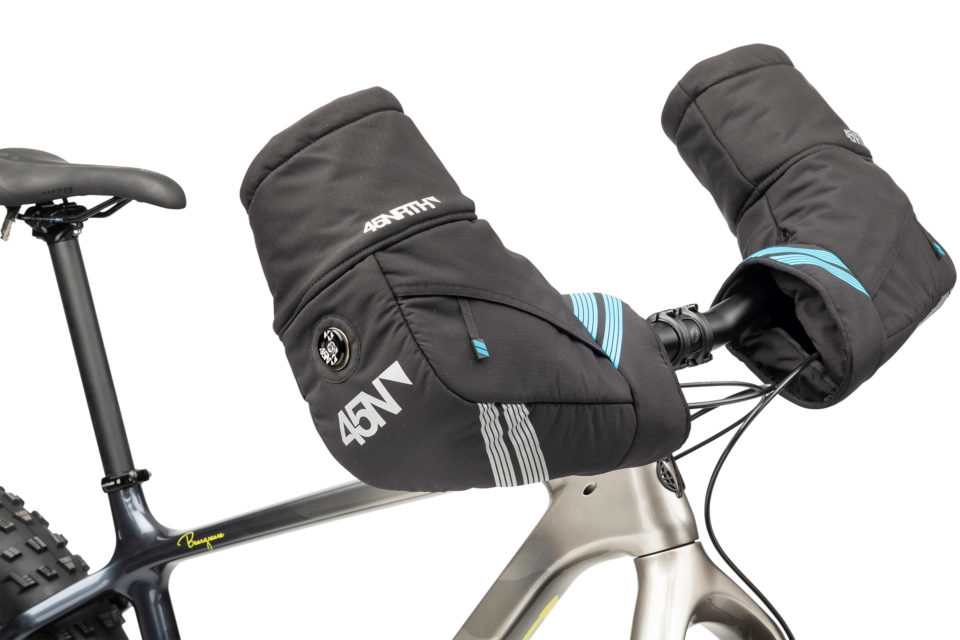
45NRTH Cobrafist Pogies
Redesigned in 2021, the 45NRTH Cobrafist Pogies are packed with modern features including multiple vents, internal pockets, a bar-end plug attachment, and a new integrated foam donut to keep out the cold. They have a temperature rating of 0°F to 15°F (-18°C to -9°C), although the previous version I tested felt comfortable from 32°F to -13°F (0°C to -25°C).
680g (One Size) / $130 at 45NRTH
Waterproof Cycling Gloves
While a good waterproof jacket and pants are crucial, it’s important not to forget about your hands and feet when riding in the rain.
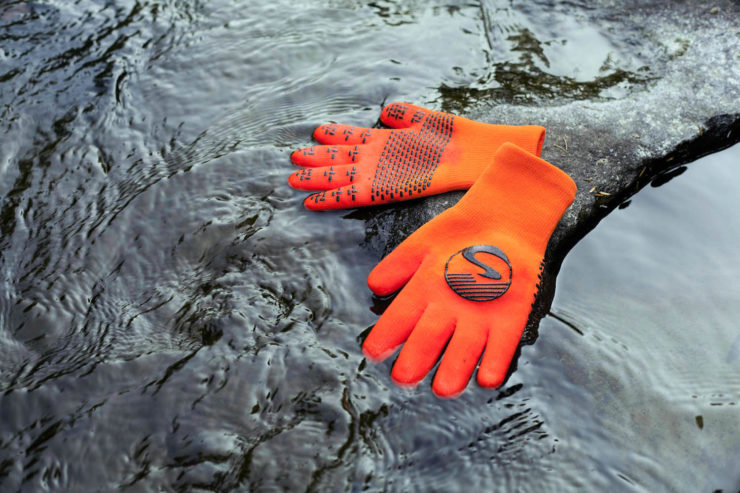
Showers Pass Crosspoint WP Knit Wool
Miles: Although I’m a bigger fan of packing a separate waterproof over glove, my Showers Pass Crosspoint Waterproof Knit Wool Gloves have seen a lot of use over the last few years. They rely on a proprietary three-layer construction to provide a fully waterproof, stretchable garment that can still wick excess moisture when things warm up. They provide plenty of grip in all conditions, and have proven to be surprisingly durable after coming along on several shoulder season trips, day rides, and even some recent trail building days.
80g (L) / $50 at REI Backcountry

Outdoor Research Goretex Mitts
Logan: Goretex mitts are a key piece of my kit for mountain-oriented expedition bikepacking trips. The pair shown in the first slide above are Outdoor Research Mt. Baker mitts, which are a little on the heavy side, but saved me in Kyrgyzstan during freezing sleet and snow conditions. I later bought their lighter Goretex mitts, but it seems like they aren’t available anymore. It appears that they revamped the Mt. Baker with a removable insulated liner.
105g (M) / ~$165 at REI

Outdoor Research Versaliner Glove
Miles: I’ve been using the Outdoor Research Versaliner Glove for years. It’s actually a two-in-one liner and waterproof shell glove combo that can be used together in cold weather for a complete system. Although I don’t often ride in the fleece liner, which is suited for shoulder season riding, the waterproof shell is made of a lightweight 2.5-layer Pertex Shield and 40D ripstop nylon outer fabric and fits easily over my standard summer weight riding gloves. Since they pack down to the size of an egg and weigh nearly nothing, they come with me on most warm-weather bikepacking trips when heavy rain isn’t expected or when a lightweight shell is adequate.
79g (L) / $60 at REI
Layering for Changing Weather
Considering that many longer bike tours often involve a variety of temperatures and conditions, this is probably the most bikepacking-relevant section in this guide. Note that layering may vary based on the temperature extremes, but here are three of our tried and true methods…
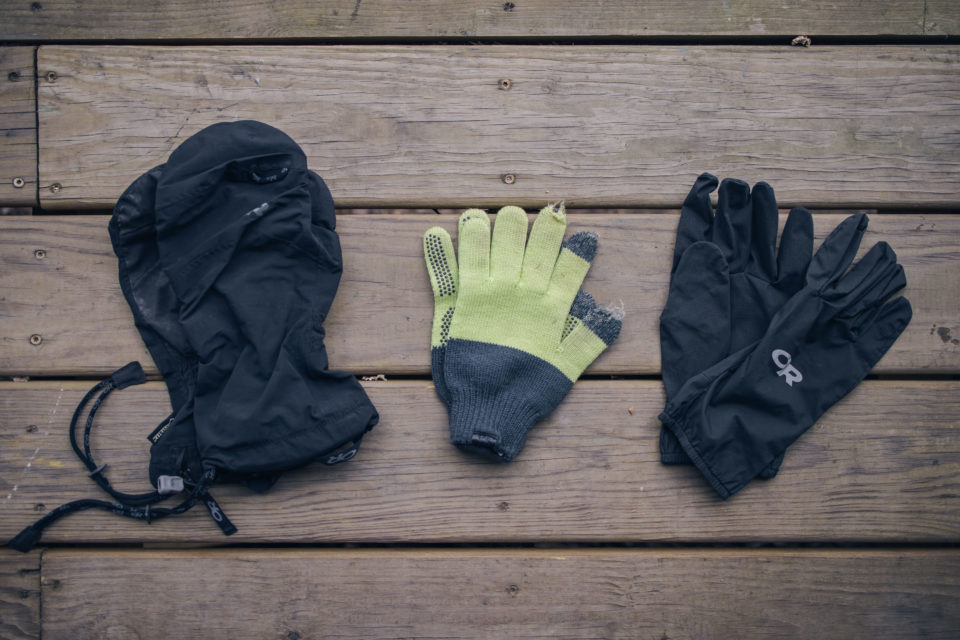
Logan
Although it changes slightly depending on the trip location, my go-to system for mountain environments often centers around a pair of knit wool gloves. In the past I’ve used used Giro Knit Wool gloves, but I recently got a pair of Defeet’s Duragloves, which I really like. The other components to the layering system vary, but often include a pair of latex gloves and a pair of waterproof Outdoor Research Goretex Mitts. This allows me to fully layer up in the event of cold weather or a storm, and I can still have options for varying temps. If I expect the wether not to be too cold (but still a risk), I’ll sub the merino knit gloves for Giro D’Wool or DND gloves. I’ve also ditched the mitts in favor of the outer liners that come with Outdoor Research Versaliner gloves for milder temps. That way I have the warmer merino gloves and a thin wind/weather proof membrane.
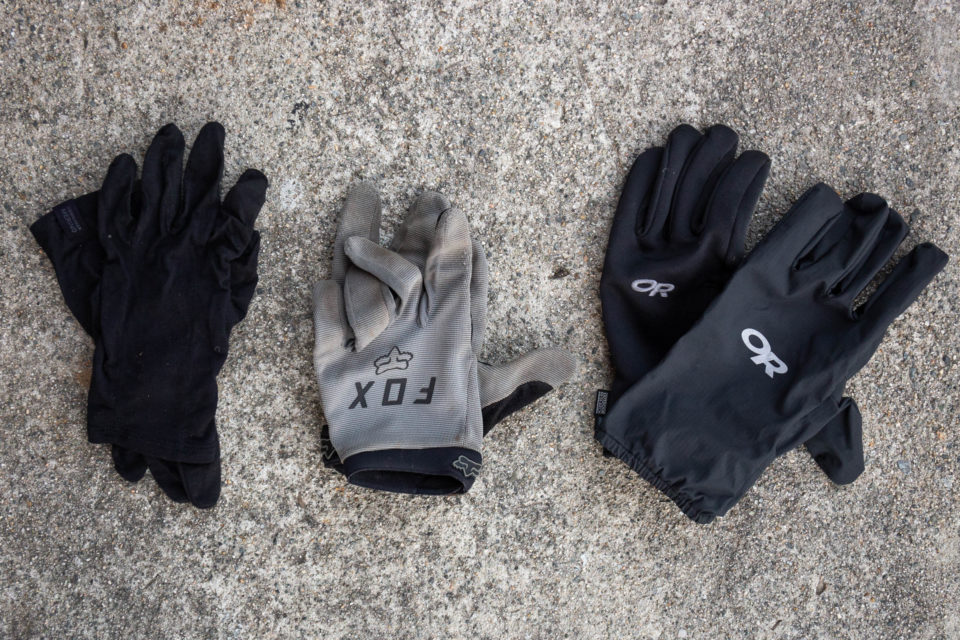
Miles
For everything but winter trips, I almost always wear a pair of lightweight full-finger riding gloves that only come off when I go to sleep. I’ve had great luck with layering the Outdoor Research Versaliner Gloves’ waterproof shell portion over my normal riding gloves for short rain storms or for some extra warmth, but would normally turn to a proper mitt or pogies for true winter conditions. I haven’t tried the renowned nitrile glove technique many times, and although it works, I find my hands get incredibly clammy and disgusting too quickly for my liking. My go-to base layer has been some Icebreaker Merino Wool liner gloves, which are lightweight and have lasted years with lots of use. I’ll probably try the new Helium Rain Mitts from Outdoor Research soon, as they are fully seam-taped and made with the same durable fabric the Helium rain jacket and pants were updated with.

Lucas
When the weather permits, I prefer to ride without gloves, even on the longest of days, so it’s rare that I have a general riding glove packed. That said, my fingers are quite susceptible to the cold, so I’ll always have a glove at the ready in my bar bag for when the weather turns. That’s typically a thin wool glove such as the Defeet Duragloves or a pair of rain gloves. For emergencies, I always pack a pair or two of disposable latex gloves. Given my sensitivity to the cold, I’ve yet to find a glove that keeps my hands adequately warm when temps drop below freezing, so mittens are a must for cold-weather bikepacking. I’ve experimented with various pairs over the years, with classic leather mittens being a favorite for proper cold. This season, I ended up with a cheap pair of 10€ mittens from Decathlon, which I run a thin glove underneath—a reminder that keeping warm doesn’t always mean needing to buy the latest and greatest.
If you’re interested in purchasing any of these products, please support your local bike shop and buy from them when possible. If you can’t, or they’re only obtainable online, we’ve provided links to manufacturers and stores where they are currently available; some of these retailers offer a meager referral fee, which helps support this platform. This has no bearing on the review or selection.
Have some favorite cycling gloves that you recommend? Leave a comment and add to the conversation below…
Related Content
Make sure to dig into these related articles for more info...
Please keep the conversation civil, constructive, and inclusive, or your comment will be removed.






